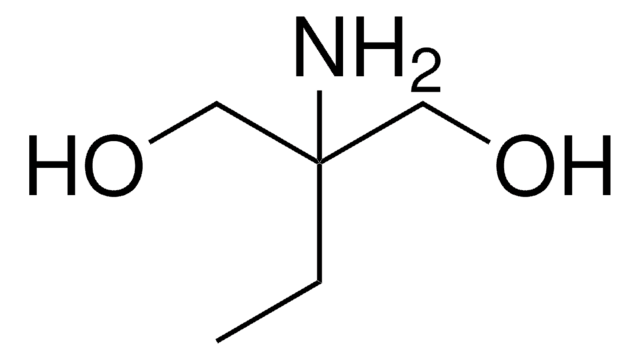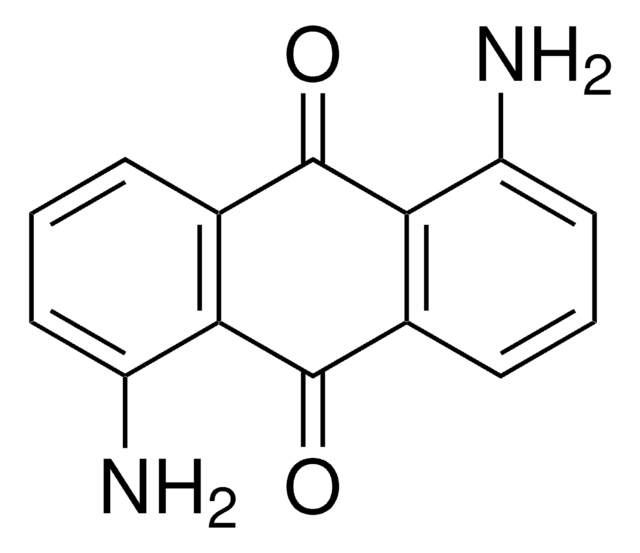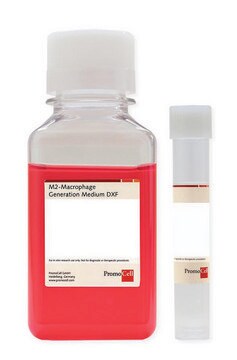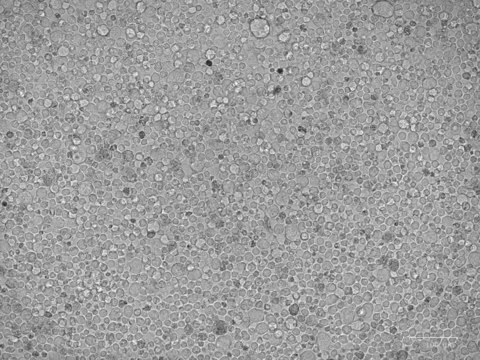6906-50A
Human Peripheral Blood Monocytes: HPBM
Synonyme(s) :
HPBM, HPBM cells
Se connecterpour consulter vos tarifs contractuels et ceux de votre entreprise/organisme
About This Item
Code UNSPSC :
41106514
Nomenclature NACRES :
NA.81
Produits recommandés
Source biologique
human peripheral blood
Forme
liquid
Conditionnement
pkg of 5,000,000 cells
Fabricant/nom de marque
Cell Applications, Inc
Mode de croissance
Suspension
Technique(s)
cell culture | mammalian: suitable
Conditions d'expédition
dry ice
Température de stockage
−196°C
Description générale
Lot specific orders are not able to be placed through the web. Contact your local sales rep for more details.
Human Peripheral Blood Monocytes (HPBM) provide a useful in vitro tool for studying various aspects of pathology and biology. Our CD14+ Monocytes are isolated and purified from human peripheral blood of healthy donors and cryopreserved immediately after isolation.
HPBM are the precursors of tissue macrophages and dentritic cells and are central to immunological responses, including cell-mediated cytotoxicity and production of inflammatory mediators. The CD14 monocyte subset expresses a component of the lipopolysaccharide (LPS) receptor complex, are large with diameter of ~18 um, represent ~80%–90% of circulating monocytes, and express higher levels of CD62L (L-selectin) and CD11b (also referred to as Mac-1 or CR3) and lower levels of MHC class II than do CD16+ monocytes.
Human Peripheral Blood Monocytes (HPBM) provide a useful in vitro tool for studying various aspects of pathology and biology. Our CD14+ Monocytes are isolated and purified from human peripheral blood of healthy donors and cryopreserved immediately after isolation.
HPBM are the precursors of tissue macrophages and dentritic cells and are central to immunological responses, including cell-mediated cytotoxicity and production of inflammatory mediators. The CD14 monocyte subset expresses a component of the lipopolysaccharide (LPS) receptor complex, are large with diameter of ~18 um, represent ~80%–90% of circulating monocytes, and express higher levels of CD62L (L-selectin) and CD11b (also referred to as Mac-1 or CR3) and lower levels of MHC class II than do CD16+ monocytes.
Origine de la lignée cellulaire
Blood
Application
Immune system dysfunction. Immunological responses, cell-mediated cytotoxicity, production of inflammatory mediators, hematopoiesis, myeloid differentiation, lipopolysaccharide (LPS), receptor complexes, CD62L (L-selectin), CD11b (Mac-1 or CR3), MHC class II.
Conditionnement
Immediately after isolation, 5,000,000 cells in DMEM containing 45% FBS & 10% DMSO.
Composants
DMEM containing 45% FBS & 10% DMSO
Qualité
Each lot was tested for proper morphology, CD14 positive selection, Negative for HIV, Hepatitis B, Hepatitis C
Clause de non-responsabilité
Ce produit, destiné à la recherche scientifique, est soumis à une réglementation spécifique en France, y compris pour les activités d'importation et d'exportation (Article L 1211-1 alinéa 2 du Code de la Santé Publique). L'acheteur (c'est-à-dire l'utilisateur final) est tenu d'obtenir une autorisation d'importation auprès du Ministère français de la Recherche, mentionné à l'article L1245-5-1 II du Code de la Santé Publique. En commandant ce produit, vous confirmez détenir l'autorisation d'importation requise.
Code de la classe de stockage
10 - Combustible liquids
Classe de danger pour l'eau (WGK)
WGK 3
Point d'éclair (°F)
Not applicable
Point d'éclair (°C)
Not applicable
Certificats d'analyse (COA)
Recherchez un Certificats d'analyse (COA) en saisissant le numéro de lot du produit. Les numéros de lot figurent sur l'étiquette du produit après les mots "Lot" ou "Batch".
Déjà en possession de ce produit ?
Retrouvez la documentation relative aux produits que vous avez récemment achetés dans la Bibliothèque de documents.
Les clients ont également consulté
Natalie S Holman et al.
Toxicological sciences : an official journal of the Society of Toxicology, 170(2), 499-508 (2019-05-17)
Most idiosyncratic drug-induced liver injury appears to result from an adaptive immune attack on the liver. Recent evidence suggests that the T-cell response may be facilitated by the loss of immune tolerance. In this study, we explored the hypothesis that
Notre équipe de scientifiques dispose d'une expérience dans tous les secteurs de la recherche, notamment en sciences de la vie, science des matériaux, synthèse chimique, chromatographie, analyse et dans de nombreux autres domaines..
Contacter notre Service technique










